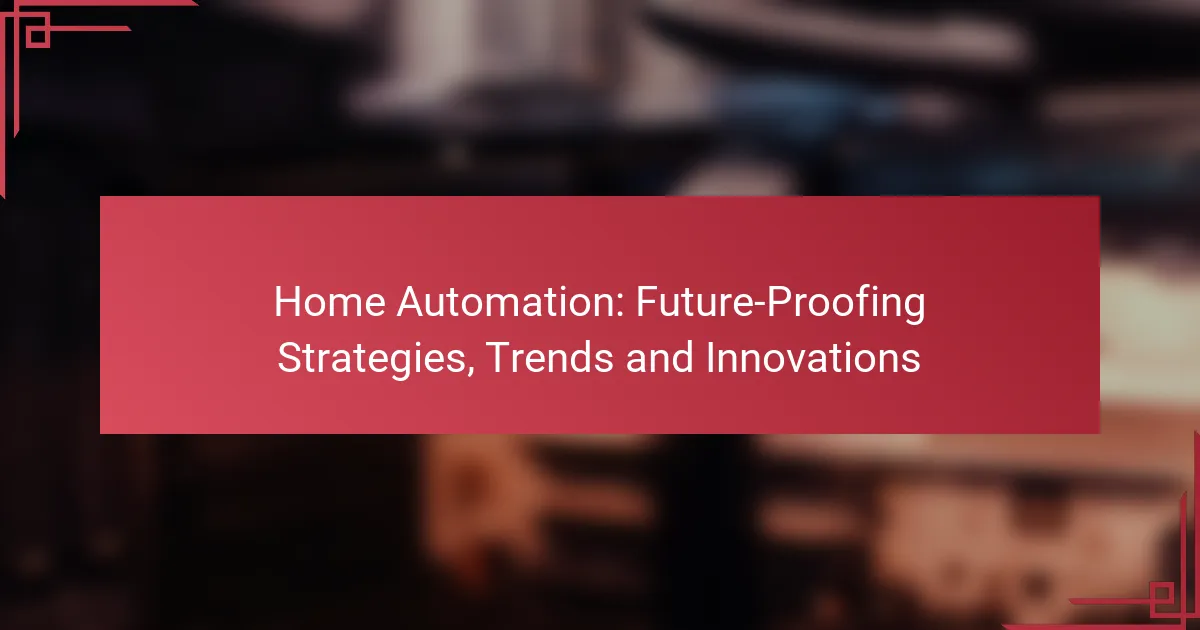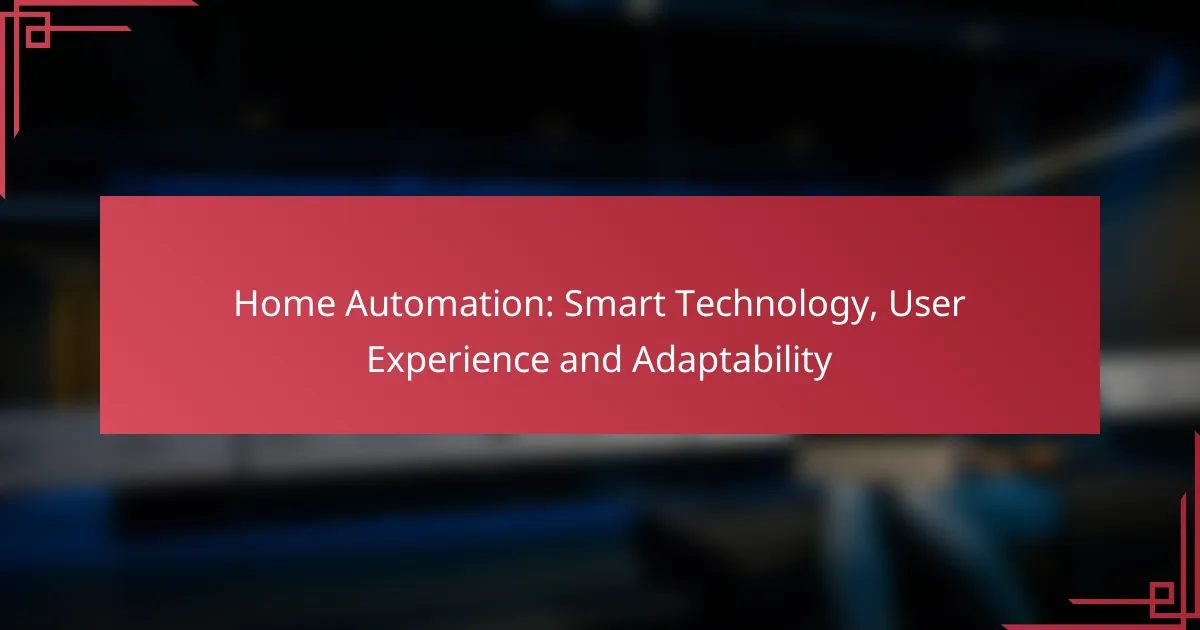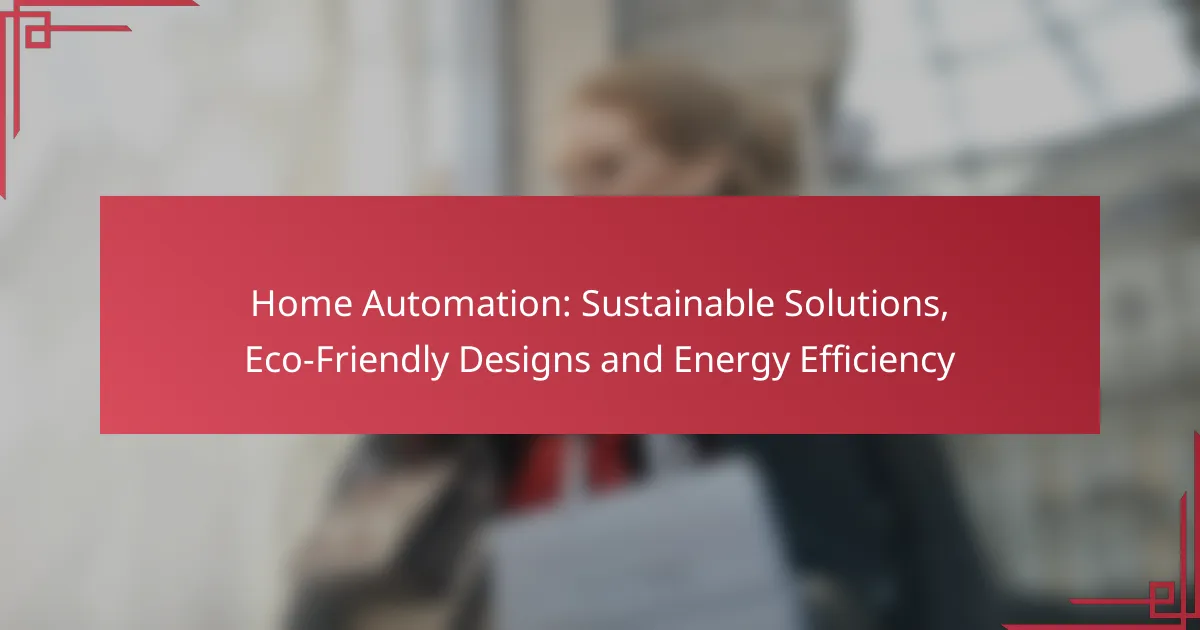As home automation continues to evolve, integrating advanced technologies is becoming essential for enhancing convenience, efficiency, and security. From smart lighting and thermostats to voice-controlled assistants, these innovations not only improve daily living but also future-proof homes against emerging trends. Selecting the right system involves careful consideration of compatibility, user interface, and scalability to ensure long-term benefits.

What are the best home automation solutions in Ireland?
The best home automation solutions in Ireland include smart lighting systems, smart thermostats, home security systems, voice-controlled assistants, and smart appliances. These technologies enhance convenience, energy efficiency, and security, making homes more comfortable and manageable.
Smart lighting systems
Smart lighting systems allow homeowners to control their lights remotely through apps or voice commands. These systems often include features like scheduling, dimming, and color adjustments, which can enhance ambiance and save energy.
Consider products that are compatible with existing fixtures and can integrate with other smart home devices. Popular options in Ireland include Philips Hue and LIFX, which offer a range of bulbs and lighting strips.
Smart thermostats
Smart thermostats enable users to manage their heating and cooling systems efficiently. They learn user preferences over time and can adjust temperatures automatically, which can lead to significant energy savings.
Look for models that are compatible with your heating system and support features like remote access and energy usage reports. Nest and Ecobee are well-regarded choices available in Ireland.
Home security systems
Home security systems provide peace of mind by monitoring properties for intrusions and emergencies. These systems often include cameras, motion detectors, and alarms that can be accessed and controlled via smartphone apps.
When selecting a system, consider options that offer professional monitoring services and integration with other smart devices. Popular brands in Ireland include Ring and Arlo, which offer comprehensive security solutions.
Voice-controlled assistants
Voice-controlled assistants like Amazon Alexa and Google Assistant serve as central hubs for managing smart home devices. They allow users to control lighting, thermostats, and security systems through simple voice commands.
Choose an assistant that is compatible with your existing devices and supports a wide range of integrations. This can enhance the overall functionality of your home automation setup.
Smart appliances
Smart appliances include refrigerators, ovens, and washing machines that can be controlled remotely or programmed for optimal performance. These devices often feature energy-saving modes and can provide alerts for maintenance needs.
When investing in smart appliances, look for energy-efficient models that can connect to your home network. Brands like Samsung and LG offer a variety of smart appliances suitable for modern homes in Ireland.
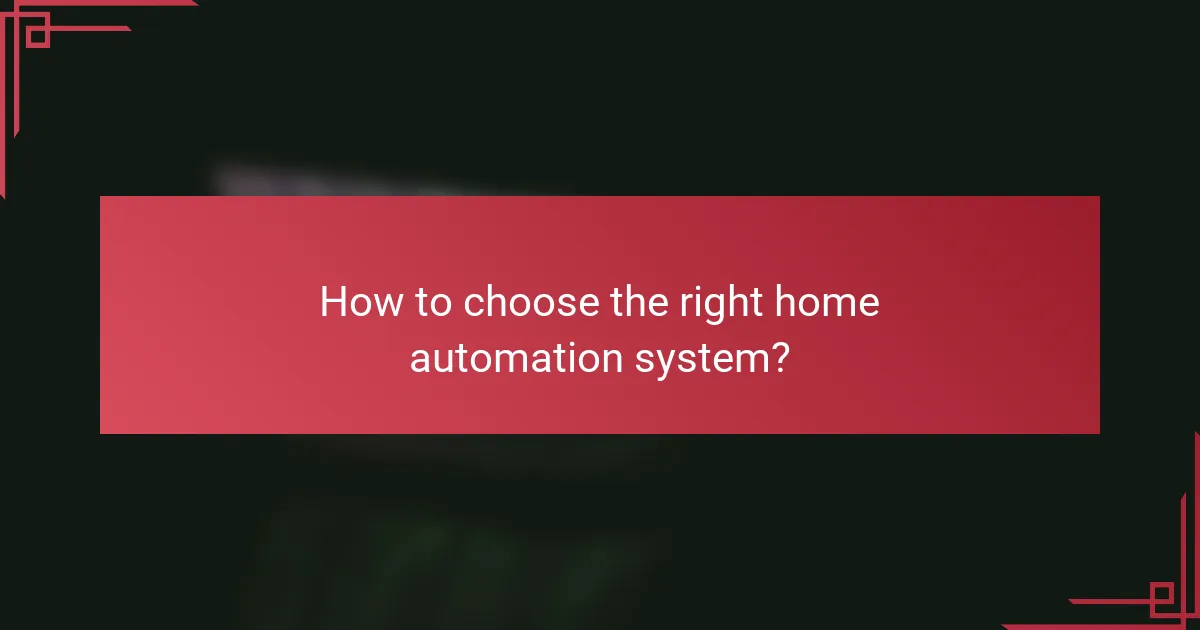
How to choose the right home automation system?
Choosing the right home automation system involves evaluating compatibility with your existing devices, user interface, and scalability for future upgrades. A well-selected system enhances convenience, security, and energy efficiency in your home.
Assessing compatibility with existing devices
Start by identifying the devices you currently own, such as smart lights, thermostats, and security cameras. Ensure that the home automation system you consider supports these devices, as compatibility varies widely among brands and technologies.
Check for common communication protocols like Zigbee, Z-Wave, or Wi-Fi. Systems that support multiple protocols can offer greater flexibility and integration options, allowing you to connect a wider range of devices.
Evaluating user interface and ease of use
The user interface should be intuitive and accessible for all household members. Look for systems that offer mobile apps, voice control, and web interfaces that are easy to navigate.
Consider testing the system in-store or through demos to gauge its responsiveness and usability. A complicated interface can lead to frustration and decreased usage, negating the benefits of automation.
Considering scalability for future upgrades
Choose a home automation system that allows for easy addition of new devices and features. This ensures that as technology evolves or your needs change, your system can adapt without requiring a complete overhaul.
Look for platforms that frequently update their software and support new devices. A system with a strong developer community can also provide ongoing enhancements and integrations, keeping your home automation current.

What are the latest trends in home automation?
The latest trends in home automation focus on integrating advanced technologies to enhance convenience, efficiency, and security. Key developments include the use of artificial intelligence, a strong emphasis on energy efficiency, and the implementation of enhanced security features.
Integration of AI and machine learning
Artificial intelligence (AI) and machine learning are transforming home automation by enabling systems to learn user preferences and behaviors. This allows devices to optimize their performance, such as adjusting heating or lighting based on occupancy patterns.
For example, smart thermostats can analyze historical data to predict when homeowners are likely to be home, adjusting temperatures accordingly. This not only improves comfort but can also lead to significant energy savings.
Increased focus on energy efficiency
Energy efficiency is becoming a priority in home automation, driven by rising energy costs and environmental concerns. Smart devices now often come with features that monitor and manage energy consumption, helping users reduce their utility bills.
Homeowners can benefit from smart plugs and energy monitors that track usage in real-time, allowing for informed decisions about energy consumption. Additionally, integrating solar panels with home automation systems can further enhance energy efficiency and sustainability.
Enhanced security features
Security is a critical aspect of home automation, with innovations aimed at providing homeowners peace of mind. Modern systems include smart locks, surveillance cameras, and motion detectors that can be monitored remotely through mobile apps.
For instance, smart doorbells with video capabilities allow homeowners to see and communicate with visitors from anywhere. These features not only deter potential intruders but also provide alerts for unusual activities, enhancing overall home security.
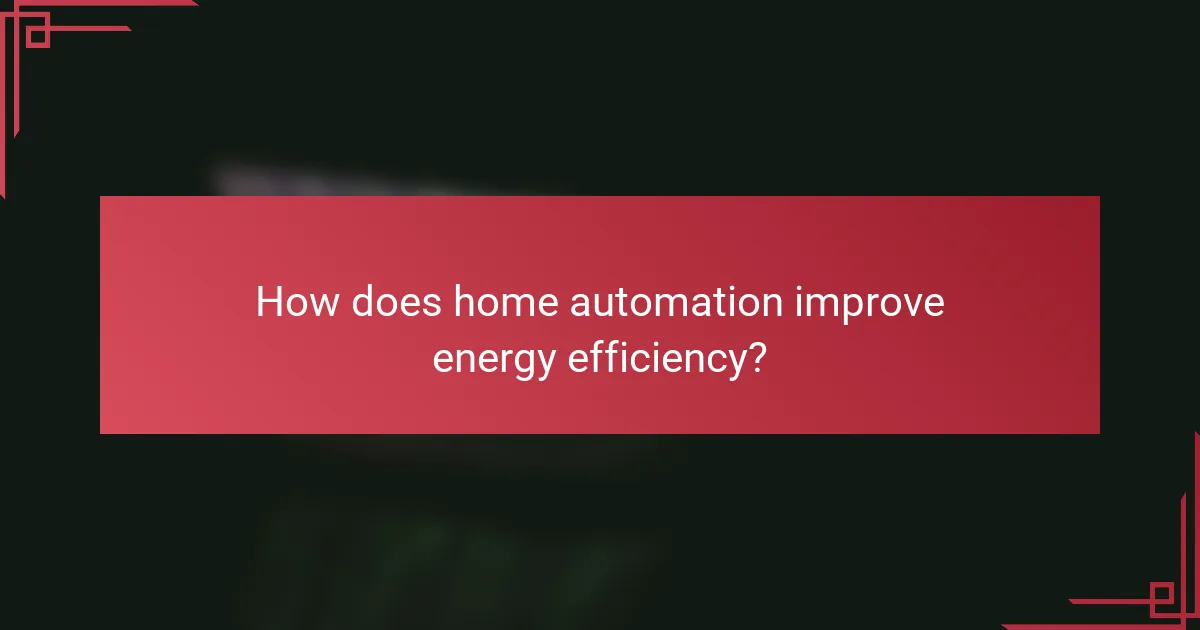
How does home automation improve energy efficiency?
Home automation enhances energy efficiency by optimizing the use of energy-consuming devices through intelligent control systems. By automating tasks such as heating, cooling, and lighting, homeowners can significantly reduce energy waste and lower utility bills.
Smart thermostats optimize heating
Smart thermostats learn your schedule and preferences to adjust heating and cooling automatically, ensuring comfort while minimizing energy use. For instance, they can lower the temperature when you’re away and warm up the house before you return, which can lead to energy savings of around 10-20% on heating bills.
When choosing a smart thermostat, look for features like geofencing, which uses your smartphone’s location to adjust settings, and energy usage reports that help you understand your consumption patterns. Popular models often integrate with other smart home devices, enhancing overall efficiency.
Automated lighting reduces energy waste
Automated lighting systems can significantly cut down on energy waste by ensuring that lights are only on when needed. Motion sensors, timers, and smart bulbs allow for precise control, which can lead to energy savings of up to 30% in lighting costs.
To implement automated lighting, consider using motion sensors in less-frequented areas like hallways or garages. Smart bulbs can be programmed to turn off automatically at certain times or when no motion is detected, providing both convenience and efficiency.

What are the costs associated with home automation in Ireland?
The costs associated with home automation in Ireland can vary widely based on the complexity of the system and the specific technologies chosen. Homeowners should consider both initial setup costs and ongoing maintenance expenses to get a complete picture of their investment.
Initial setup costs
Initial setup costs for home automation can range from a few hundred to several thousand euros, depending on the scope of the project. Basic systems that control lighting and heating may start at around €500, while comprehensive setups that include security, entertainment, and smart appliances can exceed €5,000.
When planning your budget, consider the costs of individual devices, installation fees, and any necessary infrastructure upgrades. For example, retrofitting an older home may require additional electrical work, which can increase overall expenses.
Ongoing maintenance expenses
Ongoing maintenance expenses for home automation systems typically include software updates, subscription services, and potential repairs. Many smart devices require regular software updates to ensure security and functionality, which can be free or may involve a small annual fee.
Additionally, some systems may have subscription-based services for advanced features, such as cloud storage for security camera footage. Homeowners should budget around 5-10% of the initial setup cost annually for maintenance and service subscriptions to keep their systems running smoothly.
